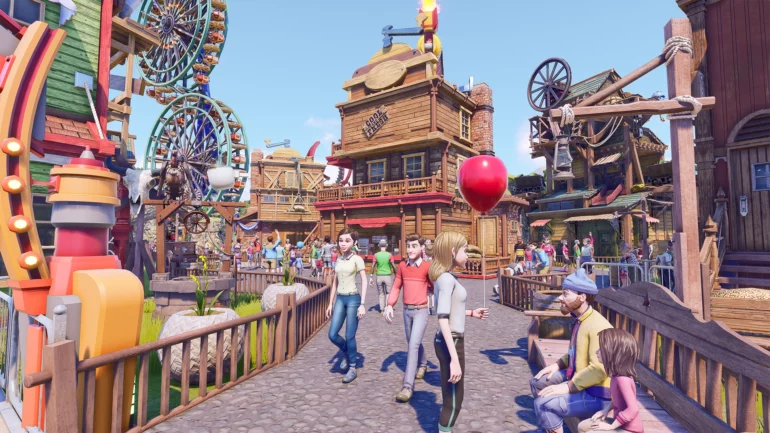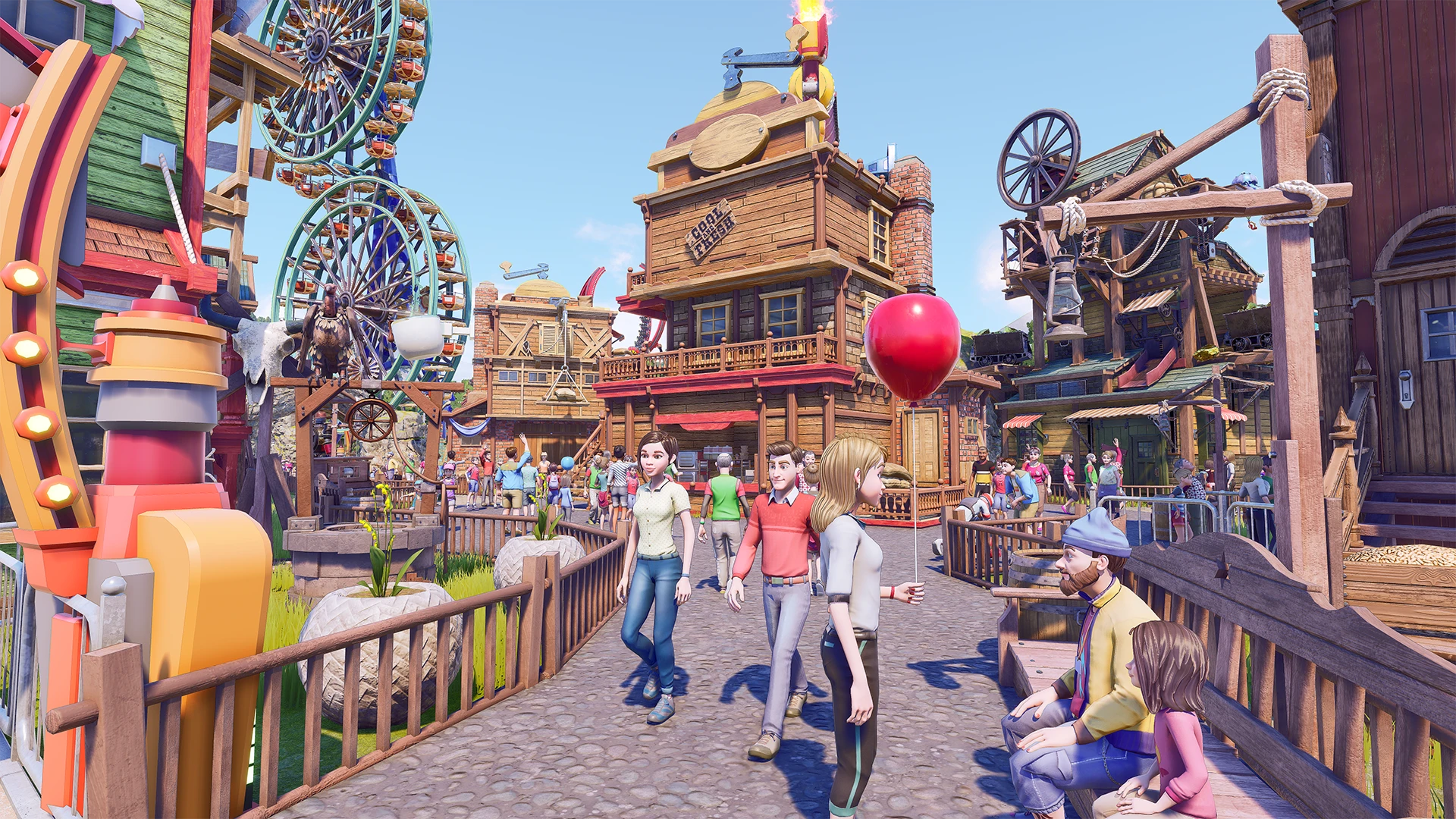Park Beyond is a game that fills a gap in the market for casual gamers who are interested in park simulation games. While there are few games that allow players to construct their parks, many of them may be too complex and overwhelming for casual players. This is where Park Beyond stands out. Developed by Bandai Namco, it offers a unique and refreshing park simulation experience. The game's main attraction is its campaign mode, which combines informative cutscenes with interactive gameplay to guide players through the process of building their parks. By acting as a tutorial, Park Beyond effectively teaches players the basics of park construction while keeping them engaged and entertained.
Filling the Gap for Casual Gamers – Park Beyond's Unique Appeal
Park Beyond is a game that lives up to its reputation of offering extravagant rides. The game goes above and beyond in delivering some truly outlandish and fantastical rides that defy the laws of physics. For those who have had the opportunity to play the beta test, they would be familiar with the two missions that were available. These initial missions have a strong focus on coaster placement, allowing players to gain a thorough understanding of the gameplay system. While the story may follow a typical formula, with a narrative centered on building new parks and a villain arc, the thrilling and imaginative rides more than make up for it.
Although the game provides a fun and entertaining experience initially, it lacks depth when it comes to the managerial aspect of park simulation. The economic management aspect of the game is not as engaging as one would hope, as it offers limited options for players. The primary objective of the game is to ensure that the park remains operational and enjoyable for the visitors. However, the challenge of managing the park's economy often leads to moments of frustration and difficulty. Therefore, while the game may offer short-term enjoyment, it falls short in providing a truly immersive and satisfying managerial experience.
Building and Designing
Construction work in most games is typically done using a modular placement system, which allows players to easily build and design various structures. However, I found that even on a PC, the controls for this particular game were somewhat frustrating. Despite this, one of the game's unique concepts, known as “Impossification,” encourages players to create imaginative and thrilling rides for their park.
While rides are essential to a park's success, building and managing the park itself presents another set of challenges. Fortunately, in campaign mode, the groundwork is already laid out nicely, making it easier for players to focus on expanding and enhancing their park. Nevertheless, managing the park's economy can still be frustrating, as the game imposes restrictions to prevent players from rapidly outgrowing their park.
Building rides is a relatively simple process that involves strategically placing nodes in a specific location and adjusting their height or curve. With this technique, one can create a wide range of exciting and thrilling rides, such as a fire ring or a cannonball. However, the task of managing an entire amusement park is far more complex, as it involves juggling numerous variables. Those familiar with the game Two Point Hospital might recognize attributes like fun and amazement, which are essential for a successful park.

In order to achieve this, rides must not only be functional but also enjoyable, the park environment must be clean and well-structured, and the staff members must be disciplined and efficient. By carefully considering these factors, park managers can ensure that visitors have an unforgettable and satisfying experience.
Challenges and Objectives in the Campaign Mode
One of the most challenging aspects of the game is managing the park's economy. Players are tasked with finding the delicate balance between the cost of running the park and its profitability. This requires careful micromanagement of assets and resources. One key aspect of this is setting prices for each ride, ensuring they are not too expensive for visitors while still generating enough income for the park.
Additionally, players must also focus on maintaining the park's appeal level in order to attract more visitors and increase revenue. The main campaign of the game presents various challenges and objectives that players must complete. As the campaign also serves as a tutorial, it provides valuable lessons on gameplay basics, such as building specific rides and managing and improving park attributes.
The game in question holds an interesting premise and can provide enjoyment when engaged in gameplay. However, the management aspect of the park may lead to mixed reactions among players. Additionally, the game's release was marred by several bugs, detracting from the overall experience. Personally, I found the controls to be needlessly complex, which hindered my enjoyment. On a positive note, the game performs well on a range of hardware, including the newly released Steam Deck. Although navigating the controls may prove challenging, the game supports various PC gaming features such as Widescreen and customizable graphics settings. Nevertheless, the graphical options are mostly labeled according to the Unreal Engine standard by default.
Stunning Visuals and High Production Values
From a visual perspective, the game is truly stunning. The story cutscenes are beautifully animated, showcasing the high production values and impeccable presentation. Although I personally wasn't captivated by the writing, it is evident that a lot of effort went into the game's aesthetics. Playing on a widescreen monitor allows for a detailed viewing experience, thanks to the convenient zoom-in and out option.
Building a park is surprisingly easy and never feels overwhelming. Moreover, the game offers substantial replay value, as expected from a simulation game. Once the campaign is completed and all aspects of the game are mastered, the sandbox mode opens up a world of endless possibilities. This mode allows players to create their dream park without any limitations or specific objectives, making it the standout feature of the game.
Park Beyond is a park simulation game that offers a decent gaming experience, but it is unfortunately held back by a few flaws. One of the main issues with the game is its slow-paced story mode, which can make the overall gameplay feel sluggish and uninteresting at times. Additionally, the frequent interruptions of cutscenes during gameplay can disrupt the flow and immersion of the game.
On a positive note, the rides in Park Beyond are creatively designed and provide an enjoyable experience for players. However, the economic aspect of managing a park can be quite challenging and lacks the straightforwardness that is found in other simulation games of a similar genre. Furthermore, compared to other simulation games, Park Beyond lacks the level of openness and freedom that many players desire. Overall, while Park Beyond has its enjoyable aspects, it falls short in certain areas, preventing it from reaching its full potential.





